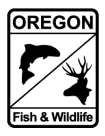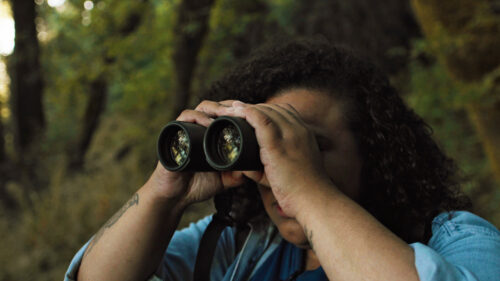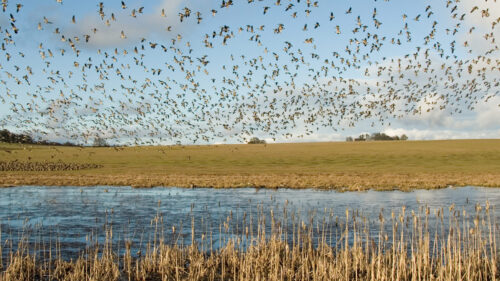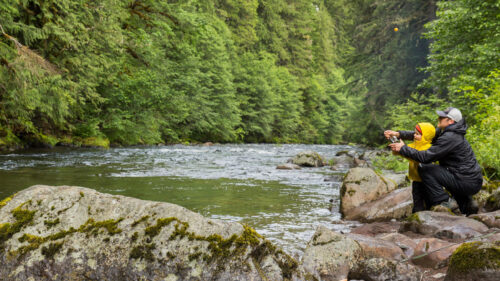Everyone’s doing it — bird-watching, that is. According to Backyard Bird Watchers, about 45 million Americans are engaged in some form of birding. It’s an easy, accessible way to connect with nature anywhere in the world, and Oregon is an amazing place to do it, whether you’re a fledgling or a pro. Read on for four tips about how to find your flock and plan your next adventure.
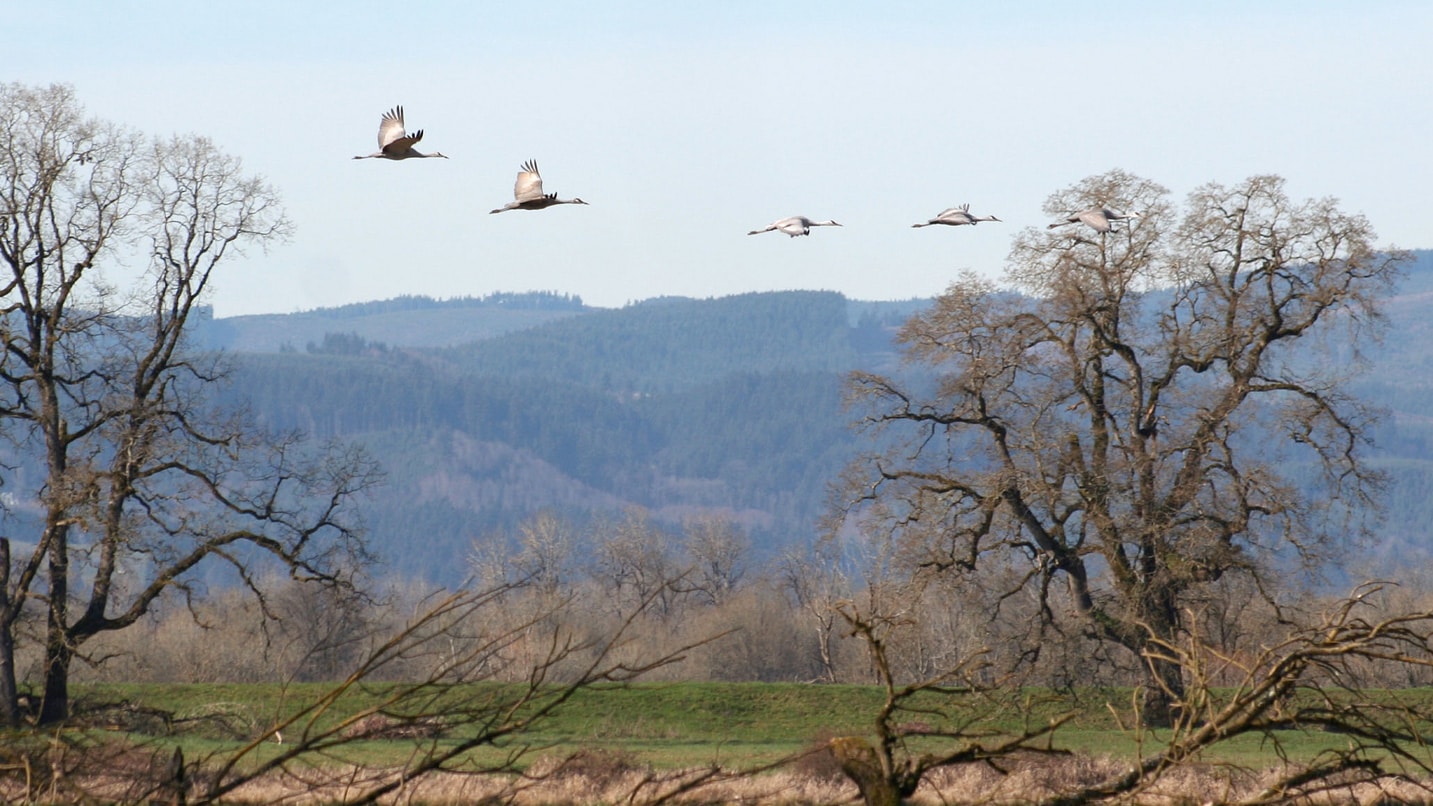
1. Find your Flock
Curious, but they’re all LBJs (Little Brown Jobbers) to you? The state’s 12 Audubon chapters host meetings and field trips. Wild Diversity and People of Color Outdoors organize outings for the BIPOC community in the Portland area.
Nothing vaults you up the learning curve like an outing with seasoned birders, who are usually happy to take you under their wing. Check out Always Be Birdin’, a podcast hosted by Portland birder Sam DeJarnett, for more expert tips.
Birding alone allows you to set your own pace without feeling intimidated, says Frank Lospalluto, a master birder in Southern Oregon. “Try staying in one place for a while. Often more birds come in.” (For inspiration, check out Slow Birding.)
Birding apps abound, and one of the best is Merlin. Created by The Cornell Lab, Merlin’s intuitive interface prompts you with easy-to-answer questions about bird size, color and behavior. Record a song or snap a picture and the app will provide a match in real time.
Invest in a good field guide, too. Sibley’s, Peterson’s and National Geographic’s guides include detailed illustrations of birds in different plumages.
Consider submitting your birding observations through platforms like iNaturalist and eBird. Start your citizen-scientist adventure with a “backyard bird list” or by taking the same bird walk every day. Over time your data will reveal interesting patterns.
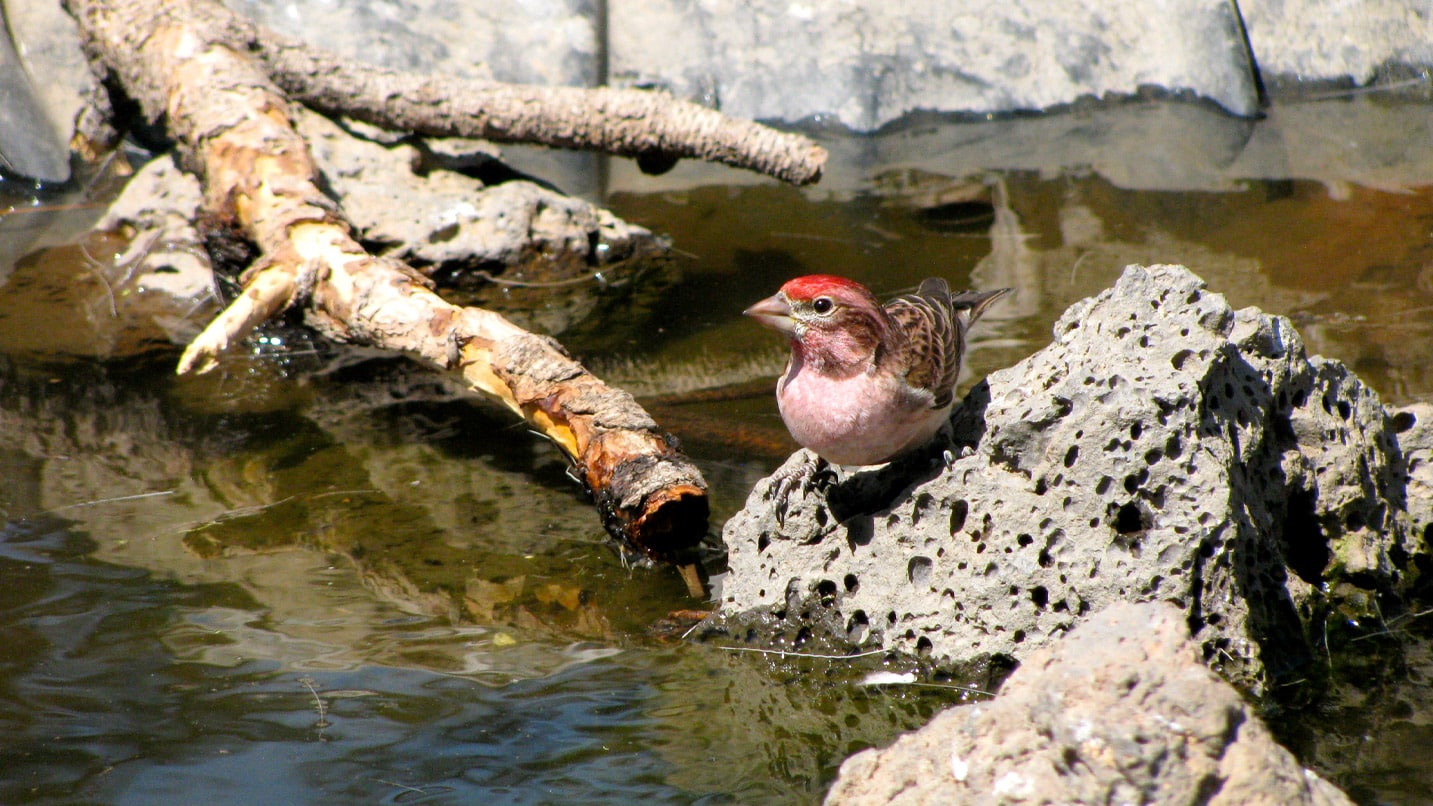
2. Get the Right Supplies
Binoculars bring birds close. A magnification of 8×42 is adequate, and Vortex and Nikon are reliable brands. Consider investing in a spotting scope to study waterbirds and shorebirds.
It’s easy to get chilled when standing quietly. Dress in layers, including hat and gloves, especially when birding near water or in the wind. Long pants are vital for brushy areas. A hat and sunglasses will protect you from the sun’s glare. Finally, wear hiking boots (or rubber boots for muddy trails).
Respectfully observe from a distance, says Lospalluto. “Breeding birds have work to do; interrupting them takes away valuable energy.” Don’t use audio playback, especially during the breeding season, as it can distract and confuse birds. Never try to capture a bird, and leave your pooch at home.
For more birding etiquette, check out the Birding Code of Ethics.
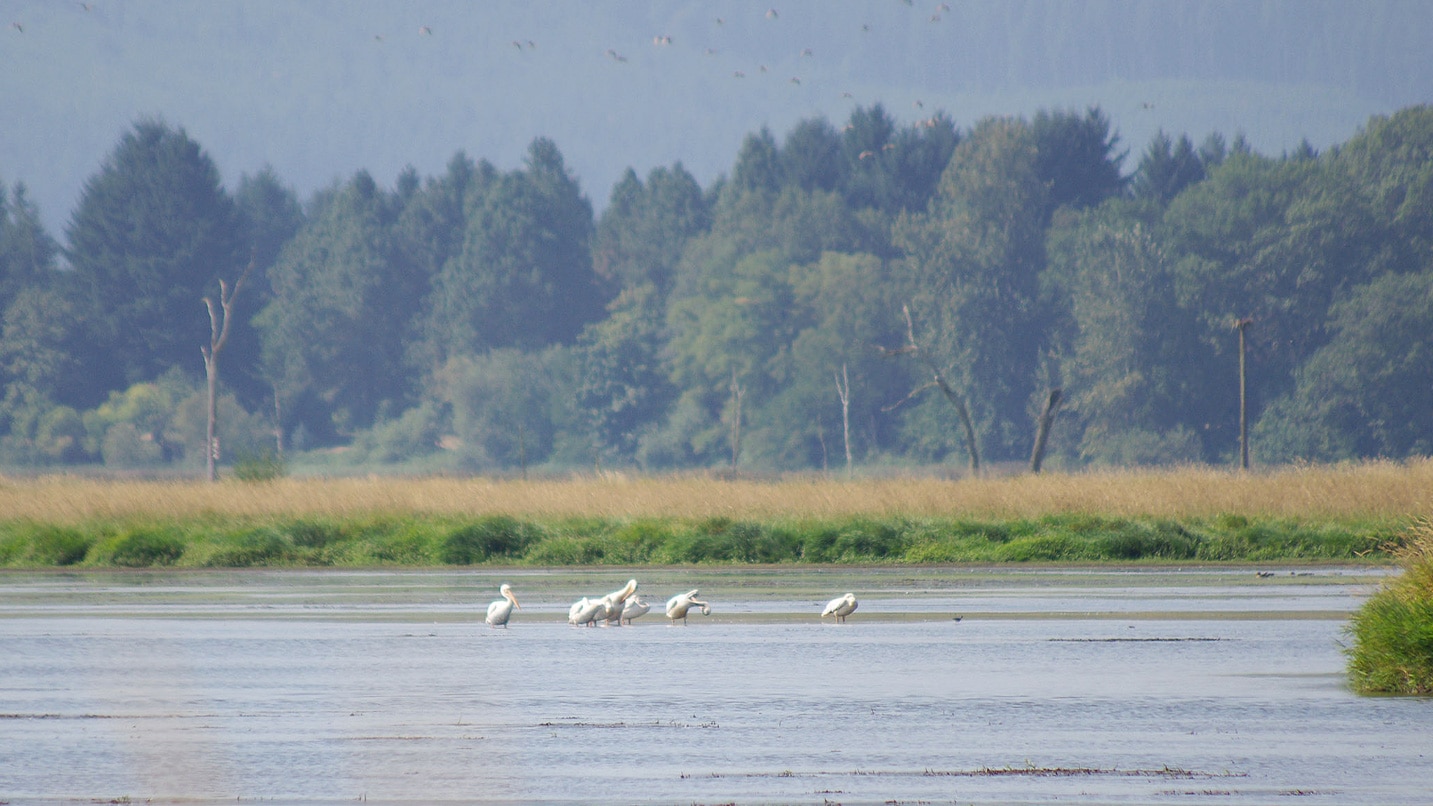
3. Choose your Perch
A neighborhood park or green space is a great place to start your birding adventure. Several ODFW Wildlife Areas are close to towns and make for rewarding outings. An annual Wildlife Area parking permit, available at ODFW’s website, is valid at 15 state Wildlife Areas.
At E. E. Wilson Wildlife Area near Corvallis, a 1.2-mile interpretive trail and network of paved and gravel roads allow you to explore most of the 1,700 acres. Look for yellow-breasted chats, western bluebirds and willow flycatchers in brushy areas; swans and geese on ponds; and wood ducks and hooded mergansers in nest boxes.
Fern Ridge Wildlife Area in Eugene offers excellent year-round birding. The open water and flooded fields are ideal for observing wintering waterfowl with a spotting scope. In summer look for colonial nesters like purple martins and swallows.
Near Medford the Kenneth Denman Wildlife Area offers some of the best birding in the Rogue Valley. Amble through six different ecosystems along the 0.7-mile interpretive trail. Pause at Whetstone Pond for ducks and herons, and hunt for sparrows and bright-yellow warblers in the willows along dikes.
In the northeast? Check out Wenaha Wildlife Area in Enterprise. April through May is prime time for viewing raptors (golden eagles, goshawks, merlins, peregrine falcons, harriers) and songbirds like mountain bluebird and western meadowlark in their stunning spring plumage plus upland birds (quail, chukar, grouse).
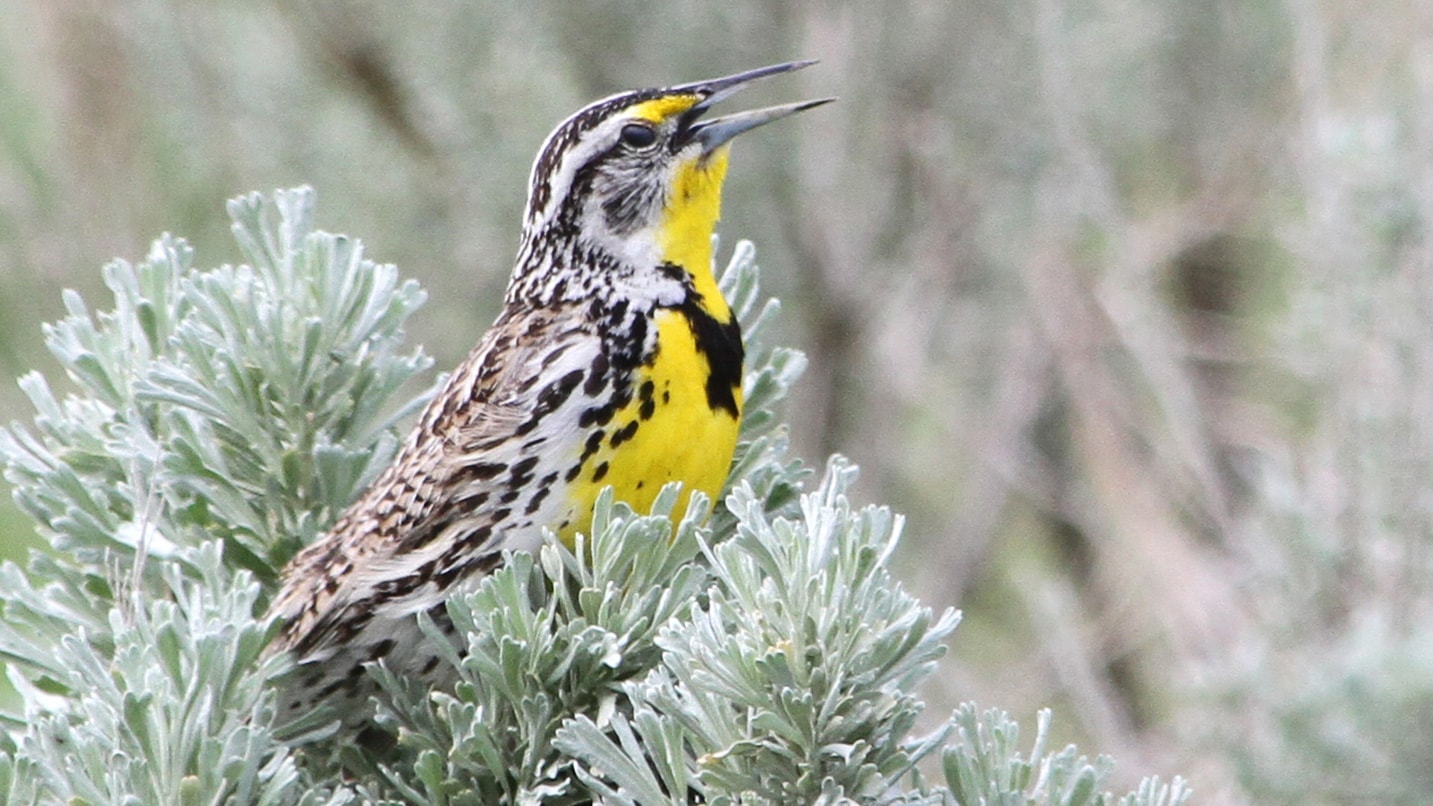
4. Plan an Adventure
The shallow lakes and wetlands east of the Cascades are important fueling stations for birds migrating along the Pacific Flyway, the avian superhighway that stretches from Alaska south to Patagonia.
The spring-fed wetlands at Summer Lake Wildlife Area in central Lake County support large flocks of migrating waterfowl and shorebirds. In March through July, stop along the 8.3-mile driving loop to observe shovelers, trumpeter swans and white-faced ibis.
Ladd Marsh Wildlife Area in La Grande contains the largest remaining bulrush wetland in northeast Oregon. Six miles of hiking trails thread through this excellent habitat, which attracts yellow-headed blackbirds, sandhill cranes and thousands of migrating ducks and geese. Black-necked stilts and American avocets nest here, too. In May catch the annual Ladd Marsh Bird Festival.
Just east of The Dalles off I-84, the Lower Deschutes Wildlife Area is an ideal place to study songbirds that frequent shrubs and trees along the wild and scenic river. In spring catch some areas of blooming wildflowers, and spy bighorn sheep and mule deer. Make sure to keep on designated trails and keep your distance from wildlife, and know that it’s illegal to pick wildflowers on public land. Vehicle access is limited so prepare to bike, boat or hike in.
